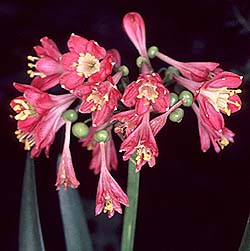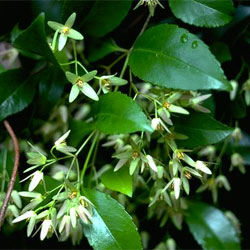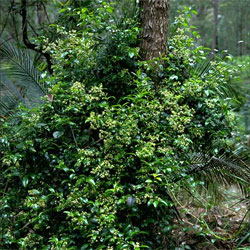Growing Friends Spring Plant Sale
You are here
Growing Friends Spring Plant Sale
Plants propagated by the Growing Friends are offered for sale to the public at very popular plant sales in spring and autumn each year. The plants are propagated by the Growing Friends from material sourced from the Garden and the proceeds are used by the Friends to support the Botanic Gardens. Plants for the spring sale will include the following:

Calostemma purpureum - Commonly known as the Garland Lily, belongs to the Amaryllidaceae, a large family well recognised in horticulture for such exotic plants as the
C. purpureum is the most common member of the genus and is the only wholly endemic genus. It occurs in western New South Wales, north-western Victoria and in South Australia. lt is well-known plant of the Riverina district, on both flood plains and rocky ridges.
It has been grown in the Australian National Botanic Gardens for many years and has performed well, flowering each summer between January and March. As with the exotic Nerines, Calostemma often flowers in a leafless state, the narrow, shining-green, strap-like leaves usually preceding flowering and reaching a length of 25-30 cm.
The plant makes an ideal rockery subject, taking up very little space but extending its flowering stem high enough to become obvious.
The yellow flowered Calostemma luteum has been considered a synonym of C. purpureum by some botanists, but the Australian Plant Census recognises the two as distinct species. Both forms will be available for sale.


Aphanopetalum resinosum - more a twining plant than a climber, it needs support to climb above ground level. However, it is an excellent plant to grow next to a eucalypt for those who want to cover the ground and is useful for shaded corners of the garden. It is found in rainforest or wet forest areas of Queensland and New South Wales.
Commonly known as Gum Vine, is one of two species of this genus, both of which are endemic to Australia. The other species, A. clematideum, has a limited distribution in Western Australia between Geraldton and Fremantle. A closely related genus is Ceratopetalum which includes the NSW Christmas bush.
The foliage is attractive with dark glossy green leaves and the flowers appear in spring and are greenish yellow in short cymes or loose panicles. The plant has the added feature of attractive fruits.
A well-composted soil is required and a light dressing of complete fertiliser in the spring should help maintain glossy healthy foliage. The plant is frost hardy and if the plant becomes woody and the foliage sparse with age it will respond well to heavy pruning. It can be grown as a basket specimen and in this situation frequent application of a liquid fertiliser is beneficial. Heavy pruning should be undertaken prior to strong growth flushes, such as early spring and in summer after flowering.

